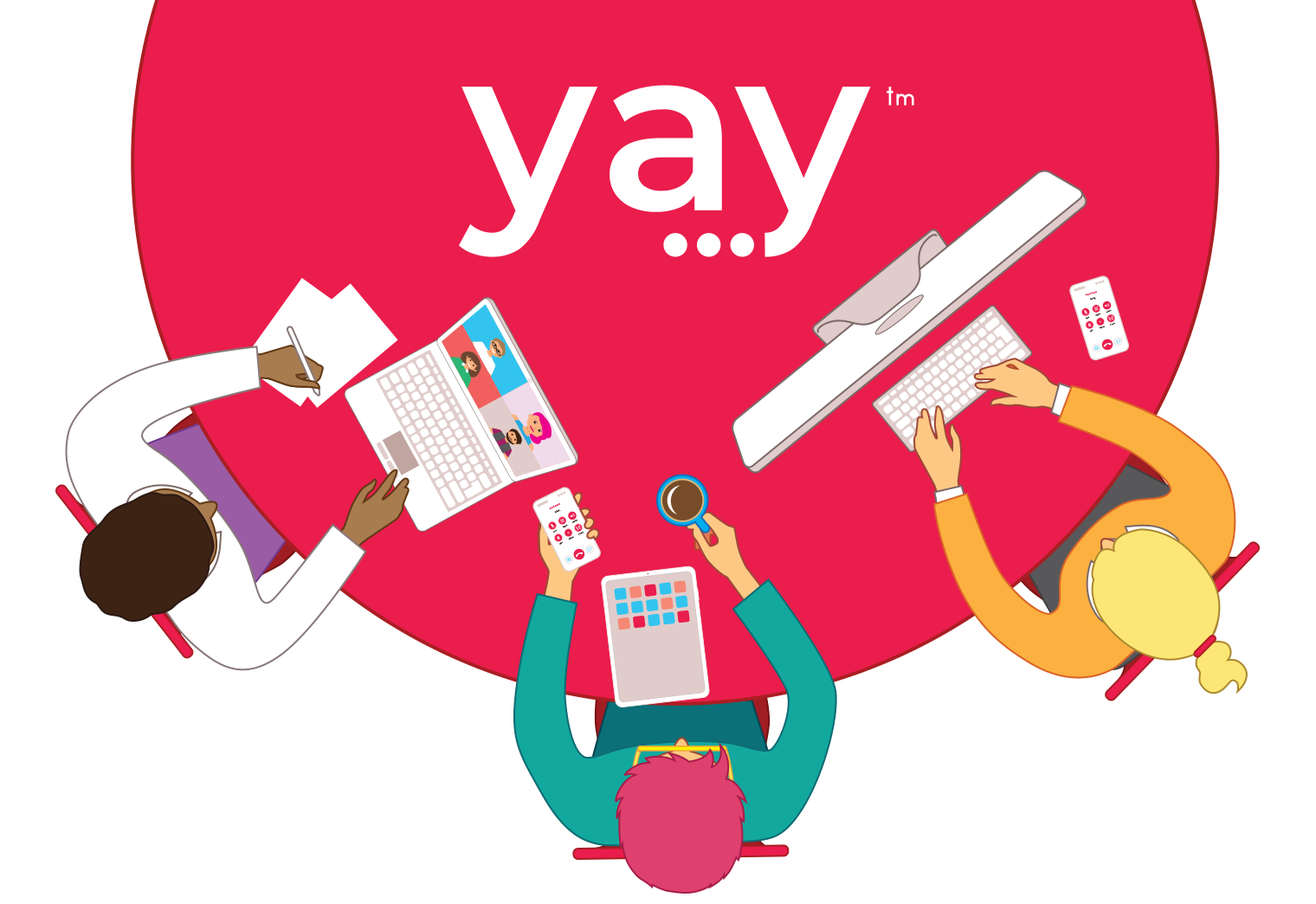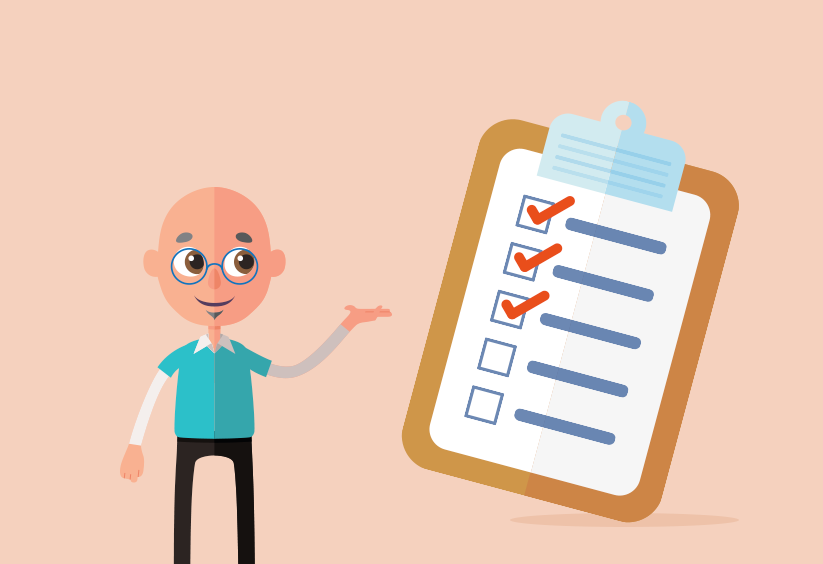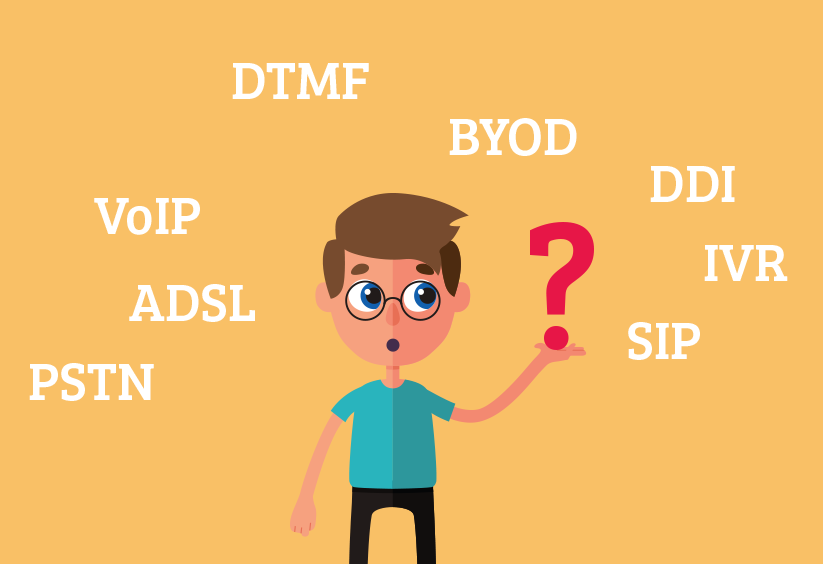Cart Total
$0.00
-
Your shopping cart is empty
Loading

Hello! Log in Your Account
New customer? Start here


|
19 min read
Contents
Quick Summary
Got a bad customer list as long as your arm? Need some actionable tips for conflict resolution over the phone? Here's our comprehensive guide.
Is the customer always right?
For those exceptional cases, the ones where you only have to mention a first name to cue office-wide eye rolls, it pays to have a toolkit of tips you can distribute to your team.
Why?
Because when you handle your most difficult customers well you’ll save relationships, save money and save the stress of confrontation.
We’re proud of having garnered literally thousands of 5-star reviews from our customers across multiple platforms.
You could say we take this stuff seriously ;).
We’ve plumbed the depths of our archives, consulted our in-house experts and compiled a bona fide guide to dealing with bad customers.
Here’s what a ‘bad customer’ is, how to recognise when you’re dealing with one and, most importantly, how to handle them.
Your good customers are understanding, patient and deliver feedback with compassion for the humanity of your staff.
A good customer on a bad day might be… less than understanding.
But these are blips. Bumps on the road to business success you and your team are travelling.
If good customers, caught at bad moments, are bumps in the road, the truly bad customers are the odd lot of road ragers trying to bully you onto the verge.
These repeat offenders can do more than verbally bruise your teammates.
They can cost your business more in terms of TLC and late payments than they actually bring into your business.
Data from Statista shows that, the larger the business, the more strongly cash flow issues are regarded as a barrier to growth.
That means it’s important that your customers pay on time.
Recognising when it’s time for drastic action and when someone just needs to feel heard is an essential skill for any member of any customer support team.
This starts with knowing who you’re dealing with.
3. The Technical Pseudo-Expert
Even if your customer service team is excellent, you won’t be able to please everyone.
Eventually, you’ll encounter either type A, the “good customer on a bad day”, or type B, the bad eggs that cost your business more than they bring in.
Many businesses even have a bad customer list to keep tabs on these individuals and track their recurring cost to the business versus their value.
Here are the four types of bad customers you’ll encounter most often.
Complaints are normal. No one can do everything perfectly and sometimes things go wrong.
How a customer reports a problem is, in fact, unimportant.
Any and all feedback should be received and processed dispassionately.
It’s when you resolve a problem in full, or in accordance with your Terms and Conditions, and the customer refuses to accept the resolution that things go awry.
You might offer a service that entrepreneurs can resell, but demand in exchange that they manage and support their own customers.
That’s fair, especially if it’s clearly outlined in your Ts & Cs, but you might find that some like to test this clearly defined boundary.
And it’s a repeated violation of clearly set, unambiguous boundaries that really defines all bad customers.
We’ll come back to that later.
Others are indecisive.
Often, this is because the customer doesn’t really know what they want. From you, or the service you’re providing.
Since they don’t know what they want, satisfaction will always be one more step away for these customers.
The time you’ll spend revising, reworking and trying to get definitive feedback on what isn’t right will eat into your bottom line.
(It will also drive you nuts).
These customers are actually likely to admit that they don’t know what they want if asked directly. Usually, this is followed with, “...but I‘ll know it when I see it”.
Some clients are sure they know more than you and your colleagues.
True expertise is a treasure, but when someone claims to know more than your technical team who built the product or service the customer is using… well. That person is probably wrong.
Most often, these customers demand proof of everything and challenge every technical statement you make.
They’ll demand to speak to non-customer facing members of staff and, when that is denied them, demand that you courier messages to and from these staff members for them.
All of this costs valuable time and is unnecessary.
This one’s simple.
Aggressive behaviour and rudeness past the point of what’s acceptable characterise this bad customer type.
The silver lining here is that, when dealt with properly, these customers often reach out a day or so later to apologise.
Glowing reviews and dizzying levels of loyalty are the prizes to be won from these raging dragons.
We know. We’ve done it ourselves ;).
Given the level of intimidation in play here, though, more authoritative members of staff might want to take the reins. Especially from more junior members without the experience to know when or how to draw the line.
1. They Change Providers Regularly
3. They're Never Available to Discuss Issues
5. They Make Your Staff Unhappy
Most often, you’ll be able to tell a bad customer while you’re on the phone with them from the characterisations outlined above.
But there’s an issue here.
How do you separate out the type A’s, the “good customer on a bad day” customers, from the type B’s?
This comes down to repeat offences.
You’ll need to dig into the weeds a bit to uncover whether they have a history of this kind of behaviour.
If they do, you need to establish their value to the business versus their cost to the business.
Finally, you can make a decision and decide who has the happy job of telling them you’re firing them as a customer.
Here’s how to recognise bad clients.
This is a difficult one to uncover.
But if, in the initial enquiry, they open with, “We’ve tried just about every other vendor out there and nothing has worked”, you’ve got a red flag.
You could be the best there is, but your competitors by necessity offer a similar service.
It bears pinning down, therefore, just where those other vendors went wrong.
This helps to determine whether or not this customer’s experience with you will be any different.
But there’s more.
These customers often fit into the “don’t know what I want” camp.
This might well be because they’re looking in the wrong place for a solution. It might be why none of your competitor’s were a good fit.
The earlier you can identify this and send them off in the right direction the better.
This is a big one.
But you already knew that.
Again, an otherwise good customer might pay you late from time to time.
But when the customer repeatedly violates your payment deadlines without a care in the world, it’s likely to cost you more down the line.
It’s also a red flag that the customer’s business has issues with cash flow.
This is strong enough cause for concern that you should look closely at how much credit you’re offering them and strongly consider lowering their limit or rescinding it completely.
When a business has a genuine complaint, it’s because the issue is impacting them.
It’s in the business’s vested interest to see the issue through to resolution.
That begins with reporting the problem (the complaint).
But it ends when they reach a resolution with you, the service provider.
If an issue is reported and then your attempts at getting in contact to resolve it are ignored, it’s safe to assume it’s no longer an issue.
If a customer brings up at a later date (while complaining about something else) that this prior issue was never resolved, you can be clear on the fact that this is on them and not you.
‘Complainer’ types are identified by their eagerness to make complaints without a corresponding interest in seeking resolution.
In business, win-win outcomes are the end goal for most parties.
Sometimes, though, a bad customer will make such outcomes impossible by acting out of pure self interest.
These parties might withhold information or lie about offers they’ve received elsewhere.
Sometimes this is to encourage you to drive down your prices, but it’s always to get you to do something you otherwise wouldn’t.
Your workers are the engine oil of your business.
Data from Statista shows that, when staff feel appreciated, they’re more likely to feel that their tasks are meaningful. In turn, they’re more engaged with the tasks themselves, leading to better business results.
It stands to reason, then, that when your staff work hard to make your customers happy and this is returned with negativity, productivity can decline.
For this reason, it pays to draw strict boundaries around what kind of behaviour towards your staff is acceptable.
1) Listen Actively to Their Complaints
4) Tell Them Your Plan of Action
5) Schedule Time to Resolve the Issue
6) Follow Up With the Customer
There are two things to remember when dealing with bad customers:
Remember that a few difficult interactions don’t a bad customer make.
It’s down to you and your team to communicate when something is unacceptable and to lead the frame of the interaction.
Here’s how to hold a professional frame and maximise the probability of positive outcomes when you’re dealing with difficult or bad customers.
Listening to customers’ concerns and complaints is essential for the growth of your business.
Therefore, preserve the frame of ‘good person, bad situation’ until proven otherwise.
While they’re describing the problem, sit quietly.
As long as they’re giving you information, both about how they feel and about the issue itself, you’re in an ever stronger position to help them. That’s good for both of you.
It’s when they stop before you’ve got all the information that you have a problem.
Don’t feel pressured into prematurely solving an issue you don’t fully understand. Instead, gather more information.
ACTION TIP:
Chris Voss, master FBI hostage negotiator, recommends ‘mirroring’, a process he describes in the book 'Never Split the Difference'.
Put simply, this involves repeating their last few words back to the customer. Adopt an inquisitive tone while you do this, with an upward inflection.
It’s deceptively simple, but using the customer’s own language prompts them to elaborate while making it impossible for them to feel misrepresented.
This also buys you time to either calm yourself or search for a suitable answer, while still gathering more information from the customer.
You’ve given the customer space to speak. You’ve mirrored their language and made them feel comfortable enough to share their issue in full.
It’s time to make the customer feel heard.
Even if you don’t agree.
This step is massively important as it quickly diffuses negative emotions.
You’ll demonstrate that you understand what the issue is and how to resolve it.
For the customer, that puts the end of their issue right in their line of sight.
This stage isn’t complete until the customer tells you you’ve understood them.
Using phrases like “I totally understand where you’re coming from” prematurely is counterproductive.
Why?
Because, to the customer, it’s dismissive.
Show them that you understand.
ACTION TIP:
Summarise the customer’s position back to them in their own words.
If you’ve misunderstood anything, they’ll correct you.
(Trust us, they will.)
Now that you’ve made the customer feel heard, it’s time for them to hear you.
The great thing about having done this first is that, if they refuse to listen to you, you’re completely within your right to call them out.
You cross no line whatsoever by saying, “Sorry, but I listened to you. Will you do me the courtesy now of listening to me?”
ACTION TIP:
State your own (or the business’s) position on the issue.
Outline what you can do for them, what steps you’ll need to take to resolve the issue and whether or not you need any more information.
You’ve listened to the issue, understood it, shown the customer you empathise with them and told them what more you need so you can do something about it.
Now it’s time for a plan of action.
You might not actually be able to solve the problem in its entirety yet, but there will be something you can do. Even if that’s just gathering more information.
Now’s the time to tell the customer what you’re going to do and to ask them how they want to proceed.
Do they want to be put on hold? For how long are they willing to wait? Do you need to come back to them tomorrow with more information or can you check back with them in 30 minutes?
ACTION TIP:
Give the customer a step-by-step breakdown of what you plan to do.
Don’t make any promises you can’t keep. If you can’t promise full resolution within the next half hour, don’t.
Some issues can be sorted within a few hours, even a few minutes. Others might take days.
If the issue needs some work or some internal communication before it can be resolved in full it’s crucial that you uphold your promises to the customer.
Once you’re off the phone, put aside the required time to deal with the issue. Schedule it into your calendar if you have to, but get it done.
ACTION TIP:
Make it a habit to immediately take notes of next actions and to schedule time to deal with them every time you put the phone down to a customer.
This will pay dividends on those busy days when the phone just won’t stop ringing.
Once you’ve moved the issue closer to its resolution, it’s time to follow up with the customer.
Even if you can’t tell them that the issue is resolved in full, the respectful course of action is to keep the customer informed about the progress of their issue.
This demonstrates that you care that the customer’s experience wasn’t perfect and that you respect their time.
ACTION TIP:
Making an effort is what’s important.
Most customers would prefer that you spend more time moving their issue closer to its resolution than ringing them incessantly.
For that reason, an informative voicemail is enough. Leave a message and get back to moving the issue forward.
All that’s left to do now is repeat steps 4-6 until the issue is resolved.
That’s it!

Keep reading for tips on keeping your cool when dealing with difficult customers.
The more you follow the above process, the more it will become second nature.
However, there are some inherent difficulties with managing confrontation over the phone. (Or anywhere else).
For that reason, we’ve compiled a few bonus tips to help you be your best. Even on tough days.
An informed client is a more understanding client.
Being upfront also means that customers will have more realistic expectations.
Often, the reason clients get frustrated is because service has fallen short of their initial expectations.
It’s your responsibility to help customers understand how your products and services work.
This way, you’ll receive fewer complaints and nurture a community of well-informed, happy clients.
Insincerity can be sniffed out a mile away.
So it pays to only apologise for things you’re genuinely sorry for.
If you’ve done nothing wrong, you’ll understandably feel a bit put out at having to personally apologise for something that’s not your fault.
But, it’s quite easy to sincerely apologise for other things.
For example:
“I’m sorry that you feel that way, it certainly wasn’t our intention to upset you or cause any inconvenience.”
Or, “I’m sorry there’s some confusion about this. That should have been communicated to you more clearly.”
Using phrases like these make it easy to channel sincerity into your voice, which helps the customer feel heard.
If your business is in the wrong, apologise candidly then go out of your way to make the necessary changes to ensure a client doesn’t experience the same issue again.
It’s easy to become flustered, upset or even angry if you’re hearing harsh language or negative tonality.
Breathe deeply and, if you really struggle to stay grounded in the face of confrontation, consider practising meditation or mindfulness.
Systematic reviews of such practices have shown that they reduce markers of stress, anxiety and depression. There’s evidence that these mood-regulating benefits overflow into other aspects of life, including the workplace.
Staying composed helps to influence the customer’s own mood in a positive way. It also communicates a confident sense of control over the issue at hand.
If you’re really struggling, reframe each interaction as a positive opportunity for growth, rather than a challenge you can’t overcome and certainly not as any kind of proof of inadequacy.
Once you’ve mastered staying calm and taking confrontation in your stride, you’ll free up cognitive resources to focus on other customer service skills that can be improved.
For example, it’s possible to be completely calm but use negative language that’s contrary to the ends you’re trying to achieve.
Do your best to reframe any attempt by the customer to place blame in the wrong place.
If something happens that isn’t the fault of your business, but rather that of an upstream provider, you can still empathise with the inconvenience caused to the customer.
Apologise for them having had a bad experience, but make it clear that the fault is not yours.
Doing this in a positive, transparent way, without sounding like you’re trying to shift blame, takes a bit of skill. That’s why we suggest only working on this once you’ve mastered managing your emotions in the face of confrontation.
When clients criticise your product, especially if you’re the owner of the business or someone deeply involved the with product’s development, it’s difficult not to take it personally.
Remind yourself as often as it takes that (i) mistakes are a natural and necessary ingredient in the recipe for growth and (ii) learning of areas you can improve will only accelerate that growth process.
According to a study by Microsoft, 95% of clients say customer service is a priority when choosing a brand.
Here at Yay.com we make use of every one of these tips and processes every day and our results speak for themselves.
When you resolve difficult issues effectively, your prize is a pool of happy customers, swimming languidly in the good vibes you provide.
When you defend your clear boundaries with confidence, you save your business the cost of keeping an account that isn’t right for it while upholding the value and productivity of your staff and colleagues.
Every business faces bad customers from time to time. We hope you use what you’ve learned here to make those interactions run more smoothly.
Learned anything useful here? Which tips or processes have you implemented in your own interactions? Let us know on Twitter.


Whether you’re just getting started or looking to sharpen up your business strategy, here’s how you can use social media to grow your business.
Posted March 19 2025 | 4 min

The best multi-line phone system is one that offers business-grade features like call queues and call recording for an affordable price. Discover how moving from analogue to digital VoIP can benefit enterprise or small business.
Revised July 5 2024 | 5 min

Migrating your organisation to a new phone system can seem daunting, but with our checklist, moving to VoIP can be a much smoother process for you.
Revised July 21 2022 | 5 min

For many personal users, Google Voice acts as an introductory experience to VoIP technology. For businesses, there's better out there.
Posted August 9 2021 | 7 min

Already using Yay.com as your business phone system provider? Learn more about our other services including domain name management and UCaaS.
Posted March 26 2021 | 4 min

True five star support in the telecoms industry is rare to find. Get to know our 5* support team more personally in this interview with two of its members.
Posted September 24 2020 | 12 min

With a 14 day free trial to Yay.com, you have a zero-cost, zero-risk period to try out any and all of Yay.com’s powerful features. Here’s what you can expect when you sign up.
Posted September 16 2020 | 4 min

Here are some ideas of how you can spice up your business phone system with custom audio and playlists.
Posted August 7 2020 | 4 min

Our call route page has been updated! Drag and drop is back; it's never been easier to configure your VoIP system's call routes.
Posted June 24 2020 | 6 min

Prepare for a boosted user experience with the new Yay.com dashboard
Posted February 21 2020 | 4 min

Learn all about our new Outbound Wallboards feature for Enterprise Users - outbound call statistics at-a-glance!
Posted January 31 2020 | 3 min

With upcoming General Data Protection Regulations (GDPR) coming into play on May 25th, learn what steps we have taken to ensure we're GDPR compliant.
Posted April 24 2018 | 3 min

Get to know your DTMF from your DDI when searching for a VoIP provider. Check out some of the more common VoIP terms.
Posted December 21 2016 | 5 min
Find out who Yay.com are and how we can help your business.
Posted December 5 2016 | 1 min